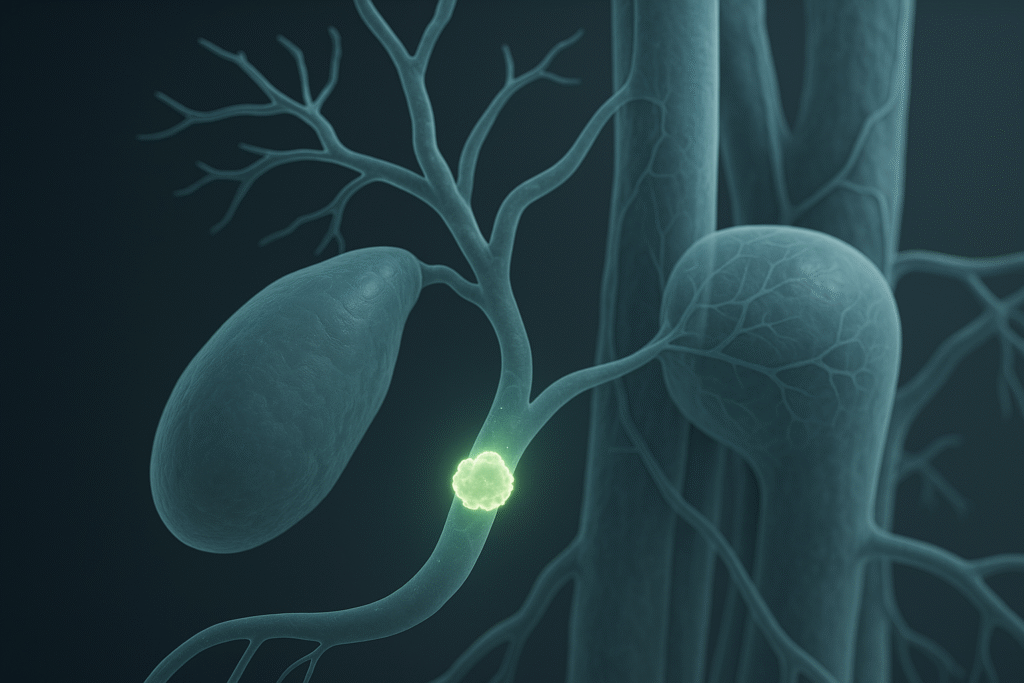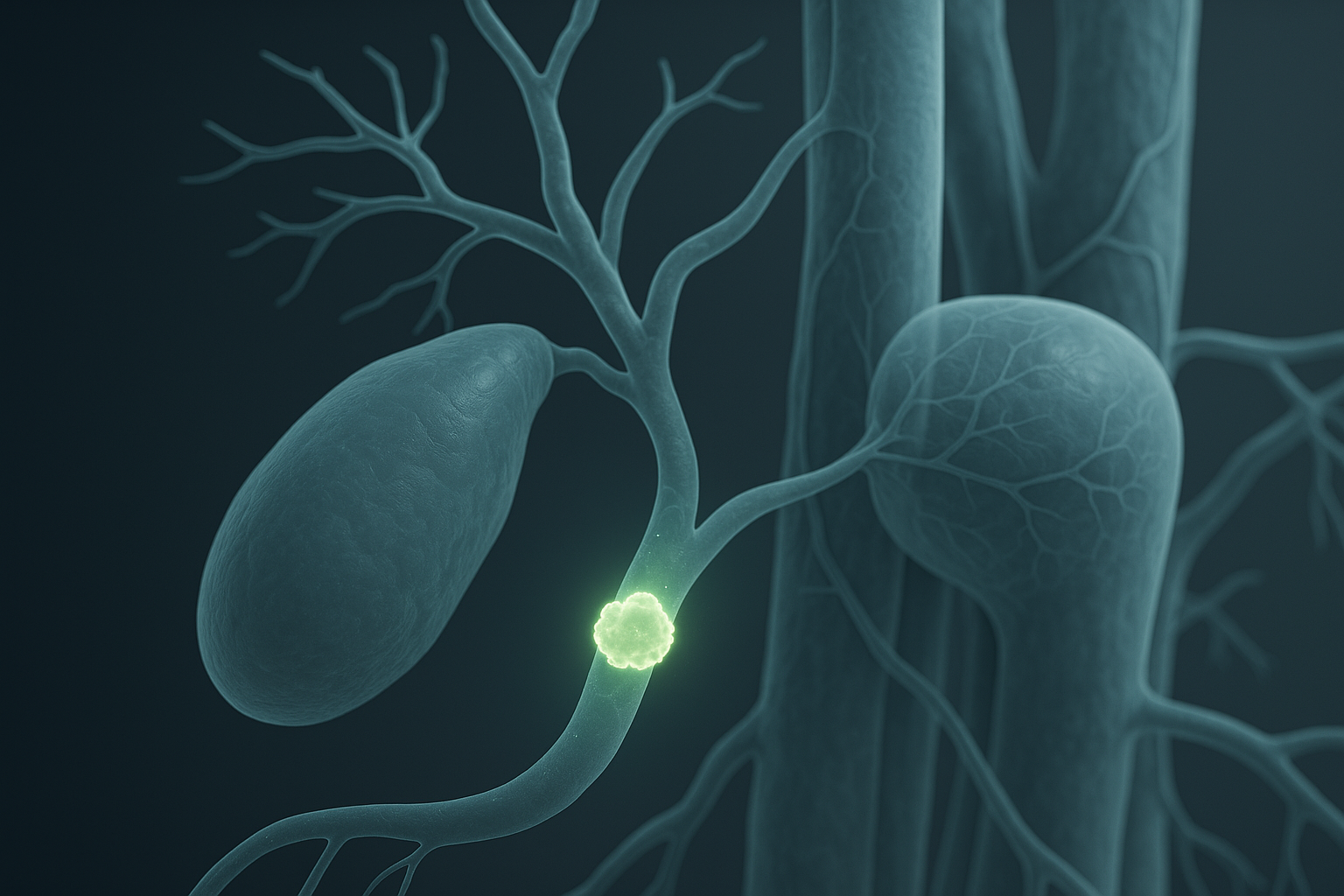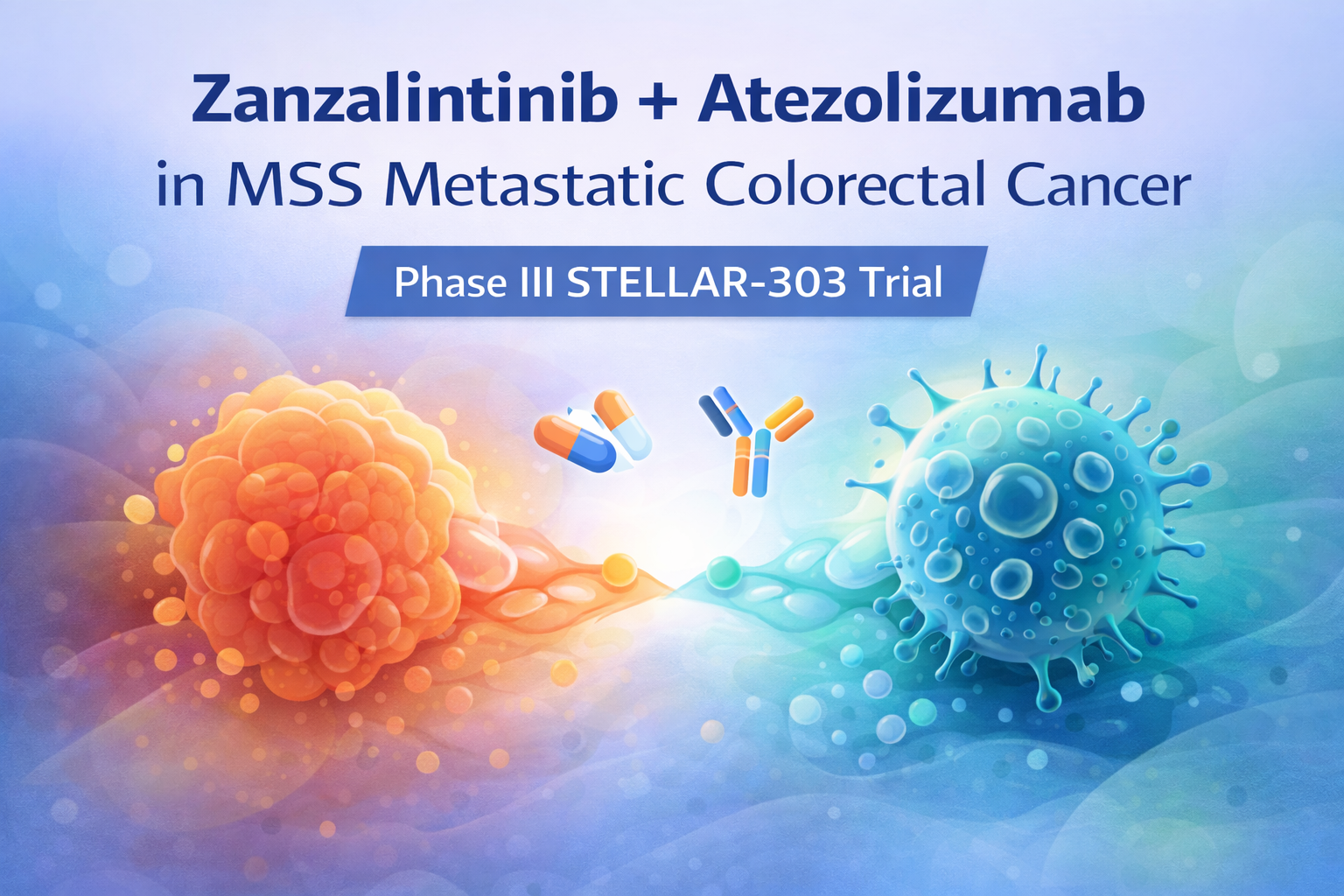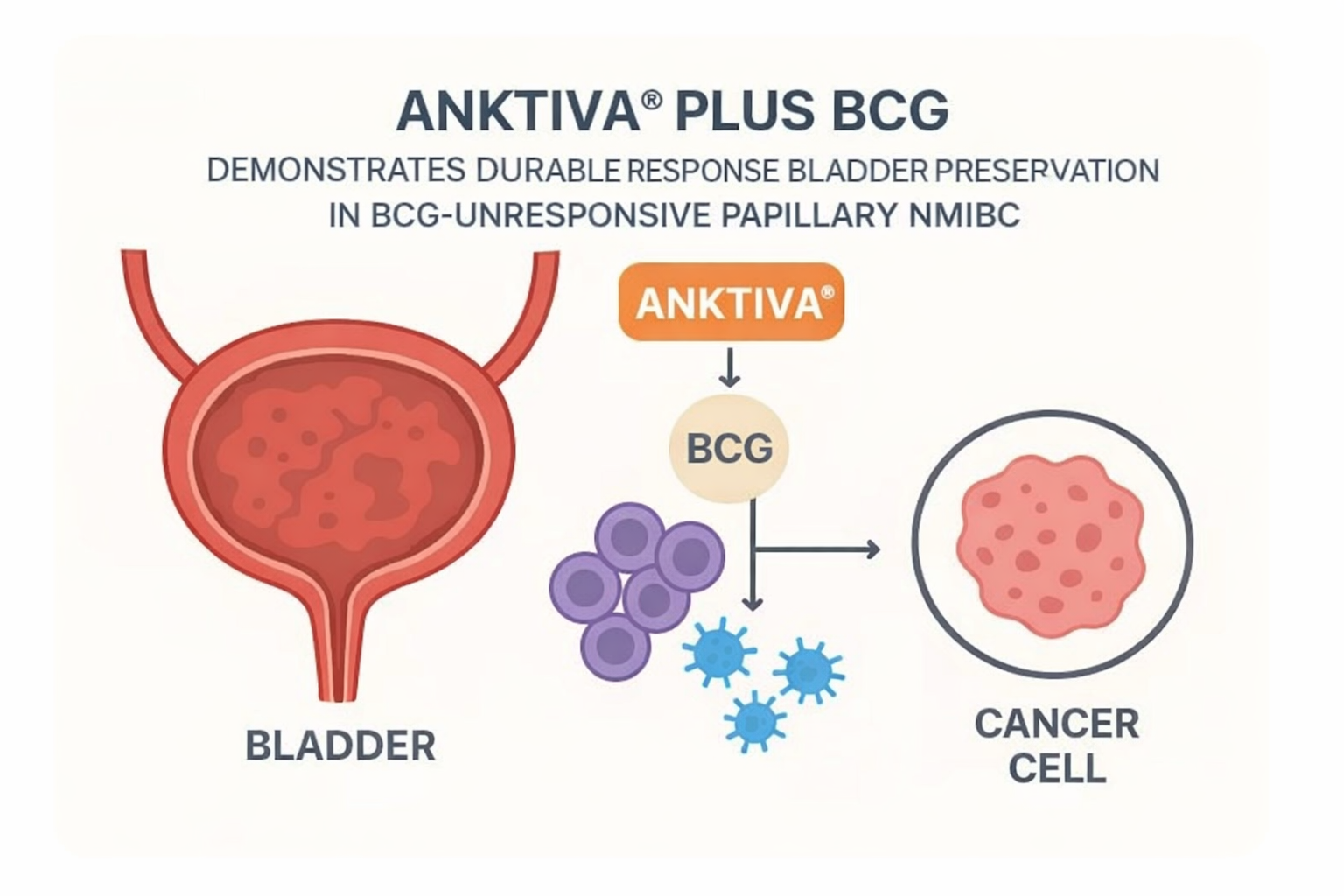

Camrelizumab plus concurrent capecitabine and radiotherapy significantly improved overall survival (HR 0.43, p=0.004) and recurrence-free survival (HR 0.46, p<0.001) compared to observation alone in patients with resected extrahepatic cholangiocarcinoma and gallbladder cancer. This triplet adjuvant therapy was well-tolerated with no treatment-related deaths, establishing a new standard of care consideration for this challenging patient population.

Study Design & Population
- Study Type: Randomized controlled trial (ACCORD trial)
- Sample Size: 93 patients with resectable EHC and GBC
- Demographics: 52% female, median age 62 years (range 31-70)
- Randomization: 1:1 to combination therapy vs observation
- Follow-up: Median 36 months (IQR 32-39)
- Study Period: April 2020 to June 2022
Key Findings
- 3-year Overall Survival: 58.2% (combination) vs 30.5% (observation); HR 0.43 (95% CI 0.24-0.79, p=0.004)
- 3-year Recurrence-Free Survival: 40.3% (combination) vs 17.2% (observation); HR 0.46 (95% CI 0.28-0.76, p<0.001)
- Treatment Completion: 100% completed chemoradiation protocol
- Safety Profile: Only 13% experienced camrelizumab delays, zero treatment-related deaths
- Early Benefit: Survival advantage evident at 1-year and maintained through 3 years
Clinical Implications
- Practice Change: Establishes triplet adjuvant therapy as superior to observation for resected EHC/GBC
- Treatment Sequencing: Immunotherapy initiated post-operatively followed by concurrent chemoradiation
- Patient Selection: Applicable to curative resection candidates with adequate performance status
- Survival Impact: Absolute 3-year OS improvement of 27.7% represents clinically meaningful benefit
Limitations
- Control Group: Observation-only comparator rather than standard chemotherapy control
- Single-Center: Results may not generalize across different healthcare systems
- Sample Size: Relatively small study (n=93) for definitive practice-changing conclusions
- Biomarker Selection: No predictive biomarkers identified for treatment response optimization
Source: https://jamanetwork.com/journals/jamaoncology/article-abstract/2835959




